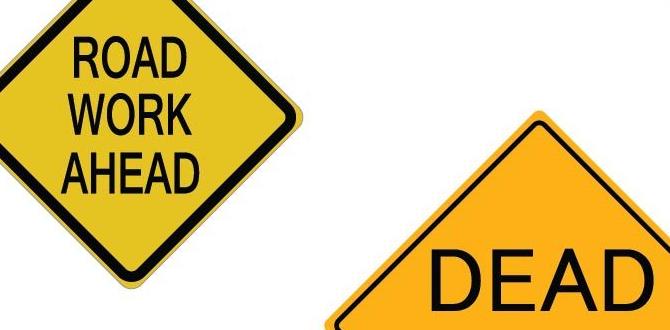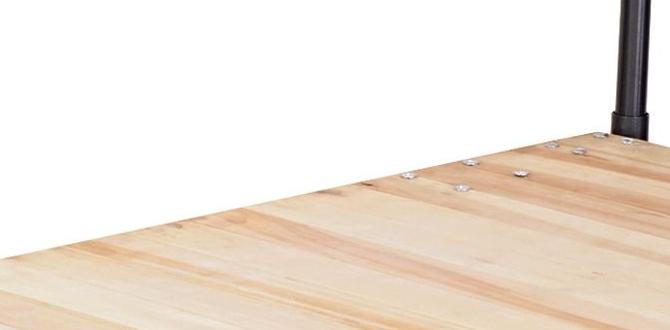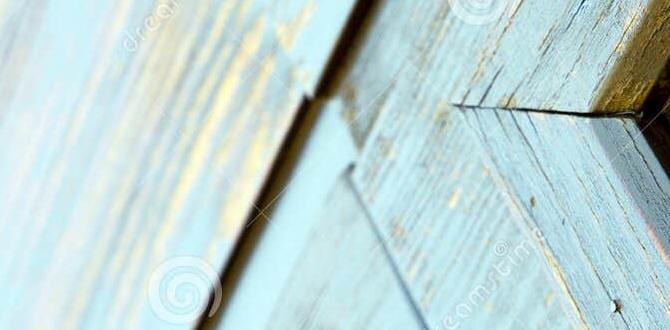Have you ever walked across your hardwood floors and felt a strange dampness? It might surprise you that this could be a sign of something more serious. Mold under hardwood floors is a common issue for many homeowners. But how can you spot it before it becomes a big problem?
Mold can hide beneath your feet, growing silently. Did you know that mold can cause health issues and damage your lovely floors? It might seem scary, but you can take steps to stop it.
This guide will help you learn the signs of mold under hardwood floors. With a few simple checks, you can keep your home safe and sound. The sooner you know how to detect it, the better you can prevent it.
Let’s dive in and explore the world of mold detection. Together, we’ll make your home a cleaner and healthier place.
Table of Contents
Signs Of Mold Under Hardwood Floors: A Homeowner’S Guide To Detection And Prevention Introduction Mold Growth Can Pose Serious Health Risks And Damage To Your Home, Particularly When It Develops Under Hardwood Floors. Identifying Mold Early Can Save You Substantial Trouble And Expenses. This Article Provides You With Essential Signs To Look Out For Regarding Mold Presence And Effective Prevention Strategies. Understanding Mold Growth Mold Thrives In Damp, Warm Environments, Making Areas Beneath Hardwood Floors An Ideal Breeding Ground, Especially If There’S Water Damage From Leaks Or High Humidity Levels. Understanding The Causes Of Mold Growth Is Crucial In Preventing Infestations. Signs Of Mold Under Hardwood Floors 1. **Musty Odor** One Of The First Indicators Of Mold Is A Distinct Musty Smell. If Your Home Has An Unexplained, Unpleasant Odor, It Could Be A Sign That Mold Is Lurking Beneath Your Floors. 2. **Water Stains Or Discoloration** Look For Any Discoloration Or Water Stains On The Surface Of Your Hardwood Floors. These Stains Can Indicate Moisture Problems That May Lead To Mold Development. 3. **Warped Or Buckled Flooring** If Your Hardwood Floors Are Beginning To Warp Or Buckle, It Could Be Due To Excess Moisture In The Subfloor, Providing An Environment Conducive To Mold Growth. 4. **Visible Mold Growth** While Mold Can Often Be Hidden, Sometimes It Can Make Its Appearance On The Surface. Check Corners Or Edges For Any Black Or Green Spots, Which May Indicate Mold. 5. **Increased Allergies Or Respiratory Issues** An Unexplained Increase In Allergy Symptoms Or Respiratory Problems Among Individuals In Your Household May Be A Sign Of Mold Presence. Prevention Of Mold Under Hardwood Floors Preventing Mold Growth Under Your Hardwood Floors Is Crucial. Here Are Effective Strategies: 1. **Control Humidity Levels** Use Dehumidifiers And Air Conditioners To Maintain Indoor Humidity Levels Below 50%. This Is A Vital Step In Discouraging Mold Growth. 2. **Fix Leaks Promptly** Check For And Repair Leaks In Plumbing Or Walls Immediately To Prevent Water From Seeping Beneath Flooring. 3. **Improve Ventilation** Ensure Proper Ventilation In Areas Prone To Moisture, Such As Bathrooms And Kitchens. Use Exhaust Fans And Open Windows When Possible. 4. **Use Mold-Resistant Products** Consider Using Mold-Resistant Adhesives And Floor Finishes When Installing Hardwood Floors. 5. **Regular Inspections** Conduct Regular Inspections Of Your Flooring And Subflooring, Especially In Areas That Are Prone To Dampness. Conclusion Identifying The Signs Of Mold Under Hardwood Floors Is Critical For Maintaining A Healthy Living Environment. By Being Vigilant And Implementing Preventive Measures, You Can Protect Your Home From The Damaging Effects Of Mold. If You Suspect Mold Growth, Consider Consulting A Professional For An Assessment And Remediation.

Signs of Mold Under Hardwood Floors: A Homeowner’s Guide to Detection and Prevention
Mold can sneak under hardwood floors and cause big problems. Homeowners should watch for signs like a musty smell or black spots. Water damage, like leaks, can lead to mold growth. Act quickly if you notice signs. Check for moisture under your floors and install a dehumidifier to keep humidity low. Regularly inspect your home to catch issues early. Knowing these signs can protect your home and health!Understanding Mold Growth
Definition of mold and its types.. Conditions that foster mold growth in homes..Mold is like that uninvited guest at a party—it’s sneaky and can ruin the fun. It’s a type of fungus that can come in many flavors, like black mold and green mold. Mold thrives in damp areas, making basements, kitchens, and bathrooms perfect hangouts. Poor ventilation and leaks? That’s like rolling out the red carpet for mold! It loves moisture and warmth. So, keep an eye out, or you might end up with a moldy surprise under your beautiful hardwood floors!
| Mold Type | Characteristics |
|---|---|
| Black Mold | Commonly found in damp areas; can be harmful. |
| Green Mold | Less harmful but still likes damp spots! |
| White Mold | Can look fuzzy; often found in decaying materials. |
Common Signs of Mold Under Hardwood Floors
Visual clues: discoloration and visible mold patches.. Tactile signs: softness or water damage to floorboards..Finding mold under your hardwood floors can be sneaky business! Keep an eye out for visual clues like discoloration or patchy mold spots—these are tell-tale signs that trouble is brewing below. If your floorboards feel a bit soft or squishy, that’s not just your imagination. It could mean water damage is setting in, creating a cozy home for mold. Don’t ignore these signs; your floors will thank you!
| Visual Signs | Tactile Signs |
|---|---|
| Discoloration | Softness of Floorboards |
| Visible Mold Patches | Water Damage |
Health Risks Associated with Mold Exposure
Symptoms of mold exposure in humans and pets.. Longterm health effects of untreated mold..Mold can harm our health and our pets’ health. People exposed to mold may feel sick. Common symptoms include coughing, sneezing, and itchy eyes. Pets may also cough or scratch more than usual. If mold is left untreated, it can cause long-term problems like asthma or allergies. It’s important to act quickly to protect your family and pets.
What are the symptoms of mold exposure?
People and pets can get sick from mold. Some signs include:
- Coughing
- Runny nose
- Skin rashes
- Fatigue
Ignoring mold can lead to serious health issues. It’s best to keep a close eye on your home!
Identifying Moisture Sources
Common sources of moisture in homes.. Importance of addressing leaks and humidity issues..Moisture can seep into homes from different places. Look for problems like:
- Damaged pipes
- Leaky roofs
- Condensation in bathrooms and kitchens
- Wet basements or crawl spaces
Fixing leaks and high humidity is key. Not taking action can lead to mold growth. Mold can harm your health and damage your home. Be proactive. Check your home often to keep it safe.
Why is it important to address moisture issues?
Addressing moisture issues prevents mold from forming and keeps your home healthy.
How to Check for Mold Under Hardwood Floors
Stepbystep guide for homeowners.. Tools and techniques for effective mold inspection..Start your mold check with a few easy steps! First, gather your tools: a flashlight, a moisture meter, and a trusty screwdriver. Shine the flashlight along the edges of your hardwood floors. Look for any dark patches or strange smells. Use the moisture meter to check if the wood is wet. If it is, you might have a mold party going on underneath! Don’t forget to poke the wood gently with your screwdriver. If it feels soft, that’s a red flag.
| Tool | Use |
|---|---|
| Flashlight | Spot dark areas |
| Moisture Meter | Check for dampness |
| Screwdriver | Test wood firmness |
Remember, detecting mold early can save you big bucks on repairs! So, grab those tools and get inspecting!
Methods for Mold Remediation
DIY methods for small infestations.. When to hire professional remediation services..For small mold spots, DIY methods can work wonders. First, mix water and vinegar in a spray bottle and zap those pesky spores away! Wear gloves and a mask. Scrub the area with a brush. If the infestation grows like a weed, it’s time to call in the pros. They have fancy tools and know exactly how to handle larger messes. Remember, if mold is running a marathon under your floors, you don’t want to be the one in charge!
| Infestation Size | Recommended Action |
|---|---|
| Small | DIY Cleaning |
| Medium to Large | Hire Professionals |
Preventing Mold Growth in the Future
Tips for maintaining optimal humidity levels.. Regular floor maintenance practices to prevent mold..Keeping your home dry is key to stopping mold. To do this, maintain humidity levels below 60%. Use a dehumidifier in damp areas. Regular upkeep of your floors is also crucial. Here are a few tips:
- Wipe up spills immediately.
- Vacuum regularly to remove dust and dirt.
- Inspect for leaks and fix them right away.
- Use a fan during damp weather.
These simple steps will help keep your hardwood floors safe and mold-free.
How can I keep humidity low in my home?
To keep humidity low, use an air conditioner or a dehumidifier. Open windows to let fresh air in when weather permits. Keep bathroom and kitchen vents running during use.
When to Call a Professional
Indicators that require professional evaluation.. Services to look for in mold inspection and remediation companies..Sometimes, spotting mold takes special eyes. If you see dark spots or notice a musty smell, call a pro. Here are some key signs you need help:
- Visible mold growth
- Water damage or leaks
- Allergies and breathing issues in the home
Look for companies that offer these services:
- Mold inspection
- Testing and analysis
- Safe removal and remediation
Professional help keeps your home safe and healthy. Don’t wait too long!
What are signs that mold needs professional evaluation?
Signs include visible mold, water damage, or health issues like allergies. These show that the problem may be too big for DIY fixes.
Conclusion
In summary, checking for mold under hardwood floors is important for your home’s health. Look for dark spots, musty smells, and moisture. Act quickly if you find signs of mold. Clean up spills and maintain humidity levels to prevent mold growth. We encourage you to learn more about mold prevention to keep your home safe and fresh!FAQs
What Are The Common Signs That Indicate The Presence Of Mold Under Hardwood Floors?You might notice a musty smell in your home. Sometimes, you can see water stains or dark spots on the floor. If the wood feels soft or spongy, that’s a sign too. You may also see tiny black dots or fuzzy growths. If you see any of these signs, it’s important to check under the floor.
How Can I Safely Inspect My Hardwood Floors For Mold Without Causing Damage?To check for mold on your hardwood floors, first look for dark spots or a musty smell. Use a flashlight to see better in dark areas. If you find something suspicious, don’t rub or scratch it. Instead, gently wipe the spot with a damp cloth. If it feels damp, let your floor dry completely before checking again.
What Steps Can I Take To Prevent Mold Growth Underneath My Hardwood Flooring?To prevent mold under your hardwood floor, keep the area dry. You can use a dehumidifier to reduce moisture. Make sure to fix any leaks in pipes or walls right away. Always clean up spills quickly and let the room air out. Check for mold regularly so you can catch it early!
How Do Humidity Levels In My Home Affect The Likelihood Of Mold Developing Under Hardwood Floors?Humidity levels in your home affect how much moisture is in the air. When the air is too humid, it can make the wood floors damp. This wetness can lead to mold growth under the floors. To keep your home safe, we should try to keep humidity below 60 percent. You can use a dehumidifier if it gets too high.
What Should I Do If I Discover Mold Under My Hardwood Floors? Should I Attempt To Clean It Myself Or Hire A Professional?If you find mold under your hardwood floors, it’s best to ask for help. Mold can be tricky and sometimes harmful. You can try to clean small spots, but for big areas, you should hire a professional. They have the right tools and knowledge to do it safely. Always make sure to keep yourself safe!



